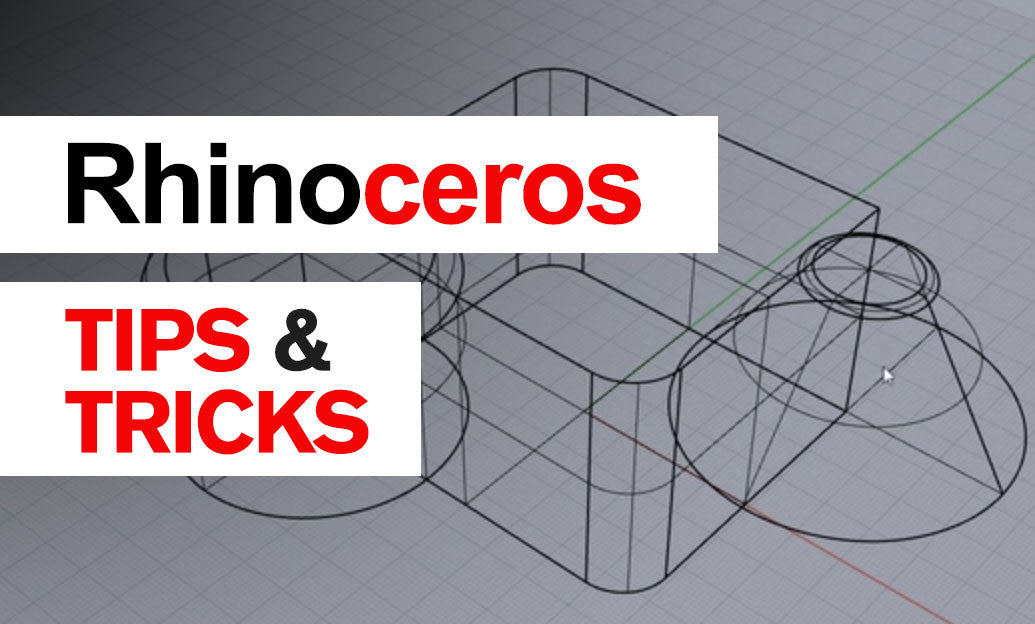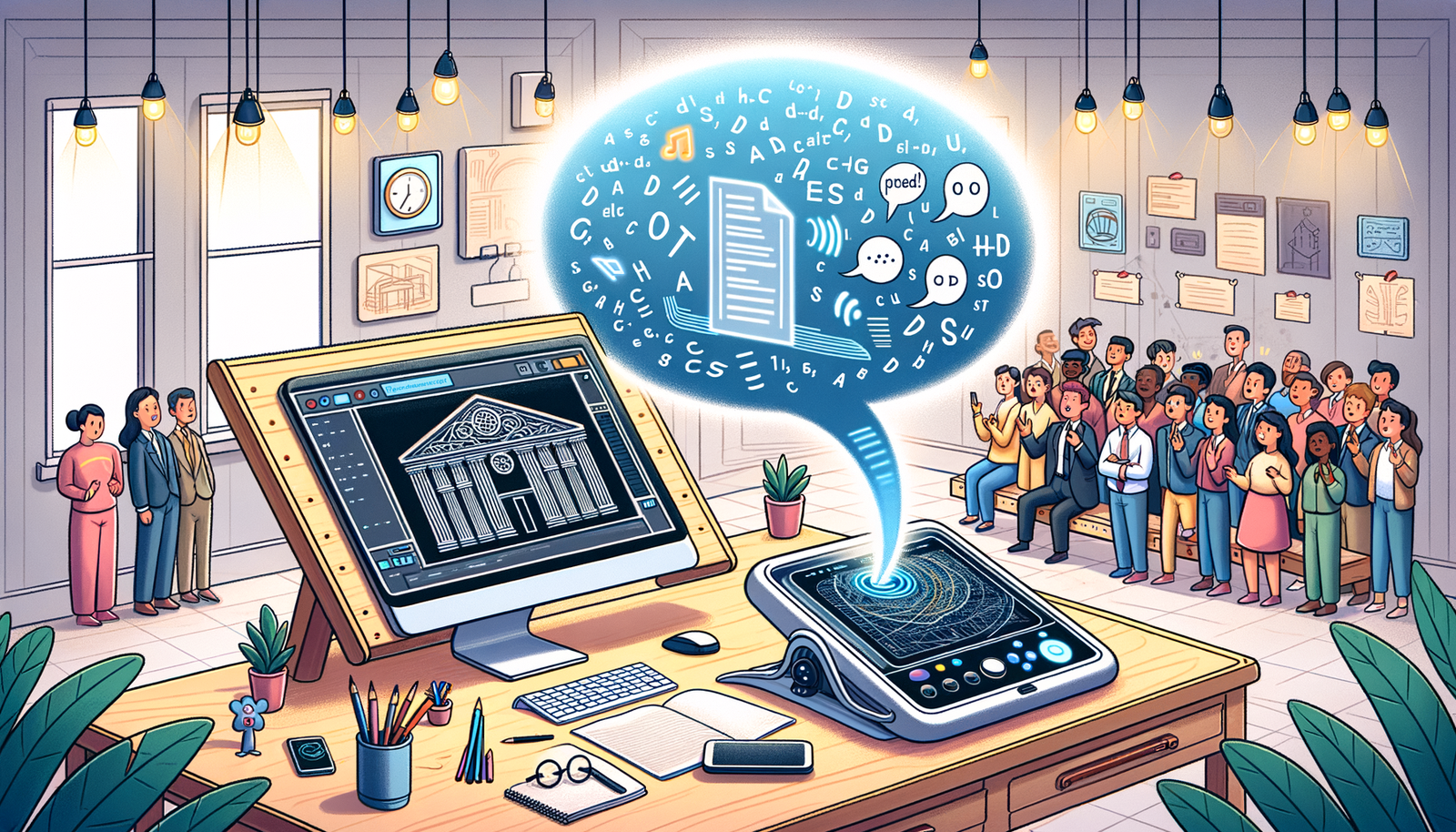Your Cart is Empty
Customer Testimonials
-
"Great customer service. The folks at Novedge were super helpful in navigating a somewhat complicated order including software upgrades and serial numbers in various stages of inactivity. They were friendly and helpful throughout the process.."
Ruben Ruckmark
"Quick & very helpful. We have been using Novedge for years and are very happy with their quick service when we need to make a purchase and excellent support resolving any issues."
Will Woodson
"Scott is the best. He reminds me about subscriptions dates, guides me in the correct direction for updates. He always responds promptly to me. He is literally the reason I continue to work with Novedge and will do so in the future."
Edward Mchugh
"Calvin Lok is “the man”. After my purchase of Sketchup 2021, he called me and provided step-by-step instructions to ease me through difficulties I was having with the setup of my new software."
Mike Borzage
Transforming Design Workflows: The Rise and Impact of Remote Collaboration Tools
October 30, 2024 6 min read


The way design teams collaborate has undergone a significant transformation in recent years. With advancements in technology and shifts in work culture, remote collaboration has become an integral part of the design workflow. This shift has opened up new opportunities and challenges for distributed design teams across the globe.
The Evolution of Remote Collaboration in Design
Before the advent of remote collaboration tools, traditional design workflows heavily relied on in-person interactions within a shared physical space. Designers, architects, and engineers would gather around tables strewn with sketches, blueprints, and physical models, engaging in face-to-face discussions to iterate on ideas and solutions. This proximity facilitated immediate feedback and spontaneous brainstorming sessions, fostering a collaborative environment that many considered essential for creative work. Communication was straightforward, with verbal cues, body language, and real-time dialogue contributing to a holistic understanding among team members.
However, as the global marketplace expanded and technology advanced, the limitations of this model became increasingly apparent. Organizations began recognizing the benefits of tapping into a global talent pool, seeking expertise and perspectives beyond their immediate geographic locations. The shift towards distributed teams was driven by the desire for increased flexibility and cost savings. By embracing remote collaboration, companies could reduce overhead costs associated with physical office spaces and accommodate varied employee schedules, enhancing overall productivity and job satisfaction. The ability to collaborate with professionals across different regions also introduced a richness of ideas and cultural perspectives, fueling innovation in design processes.
Despite these advantages, the early stages of remote design collaboration were fraught with challenges. One of the primary issues was communication breakdowns. Without the immediacy of face-to-face interactions, nuances could be lost in emails or misunderstood in delayed responses. The absence of non-verbal cues often led to misinterpretations, hindering effective collaboration. Additionally, handling design files remotely posed significant version control issues. With multiple team members working on the same project from different locations, keeping track of the latest iterations became cumbersome. Confusion over which version was the most current could result in wasted effort, inconsistencies in the design, and delays in project timelines. These challenges underscored the need for more sophisticated tools and strategies to support remote collaboration effectively.
Key Features of Effective Remote Collaboration Tools
To address the inherent challenges of remote collaboration, it's essential to leverage tools that offer key features designed for effective teamwork. One of the most critical features is real-time collaboration. The importance of synchronous work cannot be overstated, as it allows team members to engage simultaneously on tasks, mirroring the immediacy of in-person interactions. Tools that provide features like whiteboarding facilitate collective brainstorming, enabling participants to visually map out ideas and concepts together. Live editing capabilities allow multiple users to make changes to documents or designs concurrently, ensuring that everyone is on the same page. Integrated chat functions and video conferencing capabilities further enhance communication, allowing for instant feedback and clarification.
Another vital feature is robust version control and document management. Effective tools offer centralized repositories where all project files are stored and managed. This ensures that each team member has access to the most recent versions and that changes are tracked meticulously. Such tools often include the ability to revert to previous versions if needed, preserving the integrity of the design process. By maintaining a clear record of iterations and updates, teams can avoid confusion and ensure consistency across all aspects of the project.
Integration capabilities with existing design software are equally important. The importance of compatibility with CAD, BIM, and other tools cannot be understated. Seamless integration allows designers to work within familiar interfaces while benefiting from enhanced collaborative features. This minimizes disruptions to the workflow and reduces the learning curve associated with adopting new tools. When collaboration platforms integrate smoothly with established design software, they enable a more efficient transfer of data, fostering a cohesive work environment.
Security considerations are paramount when collaborating remotely, especially when dealing with sensitive design data. Effective collaboration tools employ strategies to protect information, such as encryption, secure authentication protocols, and access controls. Ensuring that only authorized personnel can access certain documents or functionalities helps safeguard intellectual property and confidential client information. As cyber threats become more sophisticated, prioritizing security in collaborative platforms is essential to maintain trust and comply with industry regulations.
- Real-time collaboration: Enables synchronous work through features like whiteboarding, live editing, and chat.
- Version control: Manages iterations and maintains design integrity through centralized document management.
- Integration capabilities: Ensures compatibility with existing design software such as CAD and BIM tools.
- Security considerations: Implements strategies for protecting sensitive design data.
Top Remote Collaboration Tools for Design Teams
The landscape of remote collaboration tools has expanded, offering a range of platforms tailored to the needs of design teams. Leading options include Autodesk BIM 360, Miro, and Figma, each providing unique features that cater to different aspects of design collaboration. Autodesk BIM 360 is specifically geared towards architectural and construction projects, offering cloud-based services that facilitate collaboration across various stages of project development. It integrates with other Autodesk products, providing a comprehensive solution for design, documentation, and construction workflows.
Miro, on the other hand, is a versatile platform that emphasizes visual collaboration through its digital whiteboarding capabilities. It allows teams to brainstorm, plan, and share ideas in an intuitive and interactive space. This tool is particularly valuable for initial stages of design projects where ideation and conceptualization are key. Figma is a powerful tool for UI/UX designers, offering real-time collaboration on interface designs. Its cloud-based nature enables designers to work together seamlessly, share prototypes, and gather feedback directly within the design environment.
When comparing these tools, it's important to consider factors such as the range of collaboration features, user experience, and scalability. Pricing models vary, with options for individual users, small teams, and enterprise-level organizations. The availability of support and community resources also plays a significant role in selecting a tool, as robust support can greatly enhance the user experience. Tools that offer extensive documentation, tutorials, and active user communities can facilitate smoother adoption and problem-solving.
Best Practices for Remote Design Collaboration
Successfully collaborating remotely requires more than just the right tools; it also involves implementing best practices that foster effective teamwork. Establishing clear communication protocols is fundamental. Teams should agree on the frequency of updates and meetings, preferred communication channels, and response time expectations. Regular check-ins and scheduled meetings help keep everyone aligned and provide opportunities to address any issues promptly.
Encouraging team bonding despite physical distance is crucial for building trust and camaraderie. Virtual team-building activities, such as online games, collaborative workshops, or informal virtual gatherings, can enhance team cohesion. These activities help team members connect on a personal level, which can translate into better collaboration and collective problem-solving.
Managing time zones and work schedules is another challenge that distributed teams often face. To facilitate synchronous work, teams can implement strategies such as rotating meeting times to accommodate different regions or establishing core hours when all team members are available. Utilizing shared calendars and setting clear expectations around availability can further streamline scheduling and collaboration efforts.
Implementing continuous feedback loops and project management techniques is essential for maintaining project momentum and quality. Adopting tools and methodologies from Agile design processes, such as sprint planning, daily stand-ups, and iterative reviews, can enhance adaptability and efficiency. These practices encourage regular reflection on progress, enable quick adjustments, and foster a culture of continuous improvement.
- Establish clear communication protocols: Define how and when team members should communicate.
- Encourage team bonding: Organize virtual activities to build relationships and trust.
- Manage time zones effectively: Implement strategies for synchronous collaboration across regions.
- Implement continuous feedback loops: Use Agile methodologies for ongoing improvement and adaptability.
Conclusion
Remote collaboration tools play a critical role in modern design workflows, enabling teams to transcend geographical boundaries and traditional constraints. By embracing these tools, organizations can tap into a diverse talent pool, enhance flexibility, and achieve cost savings. The integration of real-time collaboration, robust version control, seamless software compatibility, and strong security measures addresses the challenges of distributed work environments. As the design industry continues to evolve, the trend towards remote collaboration is set to grow, supported by advancements in technology and a shift towards more flexible work cultures. Design teams that proactively adopt these tools and best practices stand to gain a competitive edge, enhancing creativity and productivity. Embracing remote collaboration is not just a response to current demands but a strategic move towards a more connected and innovative future in design.
Also in Design News

Bluebeam Tip: Maximize Efficiency with Bluebeam Script Automation Techniques
November 23, 2024 2 min read
Read More
Rhino 3D Tip: Enhancing Collaborative Workflow with Rhino 3D's Worksession Feature
November 23, 2024 2 min read
Read More
AI-Powered Text-to-Speech: Revolutionizing Accessibility in CAD Software
November 23, 2024 6 min read
Read MoreSubscribe
Sign up to get the latest on sales, new releases and more …


